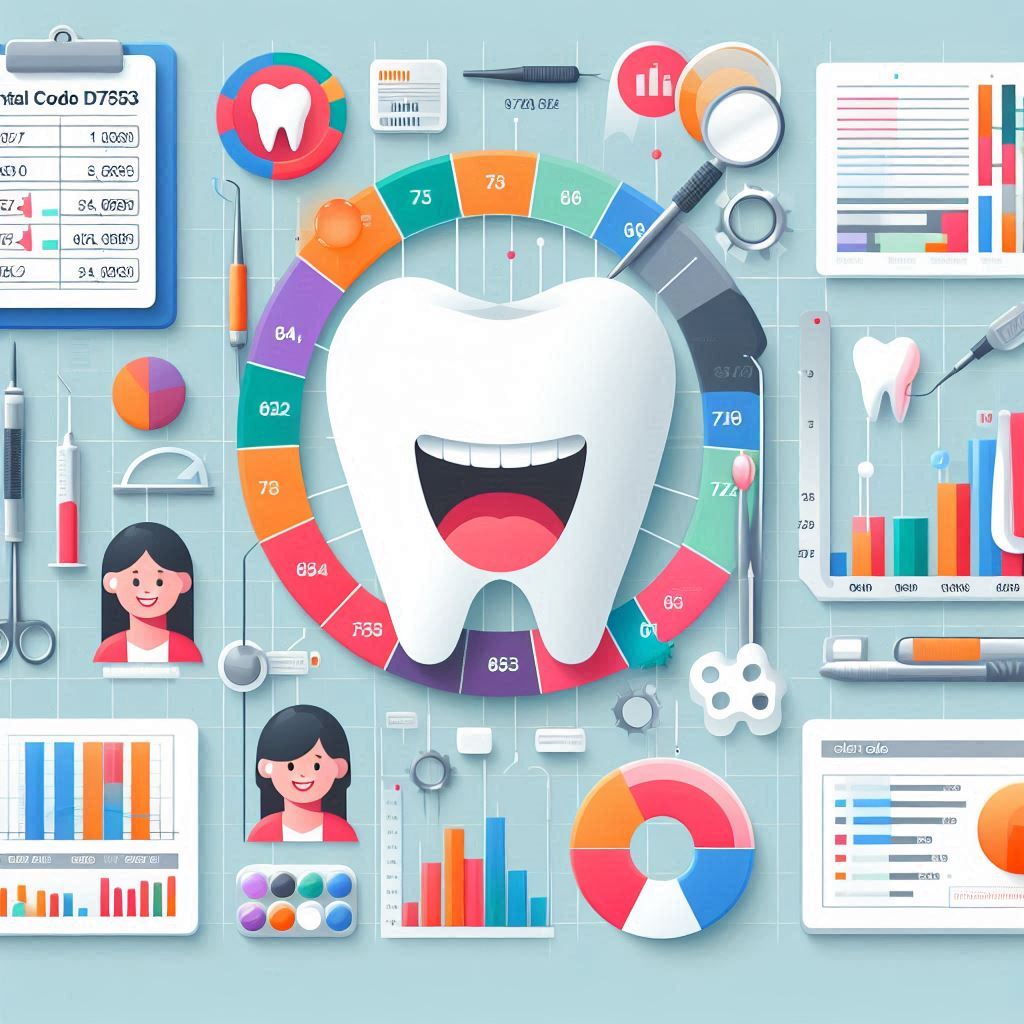Understanding the D7953 Dental Code Cost
Dental procedures can often feel overwhelming, not just because of the treatments themselves but also due to the complex coding system used to describe them. One such code, D7953, is a specific dental procedure that many patients encounter but may not fully understand. Whether you’re a patient trying to decode your dental bill or a curious reader looking to expand your knowledge, this article will provide a comprehensive guide to the D7953 dental code.
We’ll explore what the D7953 code entails, the procedure it represents, the factors affecting its cost, and how you can navigate insurance coverage. By the end of this article, you’ll have a clear understanding of D7953 and be better equipped to make informed decisions about your dental care.
2. What is the D7953 Dental Code?
The D7953 code is part of the American Dental Association’s (ADA) Current Dental Terminology (CDT) codes. These codes are used to standardize dental procedures for billing and insurance purposes. Specifically, D7953 refers to a bone replacement graft procedure for a ridge preservation or socket preservation following a tooth extraction.
This procedure is critical for patients who plan to get dental implants or other restorative treatments in the future. By preserving the bone structure after an extraction, the D7953 procedure helps maintain the integrity of the jawbone, preventing bone loss and ensuring a stable foundation for future dental work.

3. When is the D7953 Code Used?
The D7953 code is used in specific scenarios, primarily after a tooth extraction. Here are some common situations where this procedure might be necessary:
- Tooth Extraction for Implants: If a patient plans to get a dental implant, preserving the bone is crucial for the implant’s success.
- Preventing Bone Loss: After an extraction, the jawbone can begin to deteriorate. A bone graft helps maintain the bone structure.
- Cosmetic Reasons: Patients who want to maintain their facial structure and prevent a sunken appearance may opt for this procedure.
4. The Procedure Behind D7953
The D7953 procedure involves several steps, each critical to ensuring the success of the bone graft. Here’s a detailed breakdown:
- Tooth Extraction: The damaged or decayed tooth is carefully removed.
- Socket Cleaning: The extraction site is cleaned to remove any debris or infection.
- Bone Graft Placement: A bone graft material is placed into the socket. This material can be synthetic, from a donor, or harvested from the patient’s own body.
- Healing and Integration: Over time, the graft material integrates with the natural bone, preserving the ridge and preparing the site for future procedures.
5. Factors Influencing the Cost of D7953
The cost of a D7953 procedure can vary widely depending on several factors:
- Geographic Location: Dental costs vary by region. Urban areas tend to be more expensive than rural ones.
- Type of Graft Material: Synthetic materials are often less expensive than donor or autogenous grafts.
- Dentist’s Expertise: Experienced specialists may charge more for their services.
- Additional Procedures: If other treatments are needed, such as a membrane to cover the graft, costs will increase.
6. Average Cost of D7953 Across the U.S.
The cost of a D7953 procedure typically ranges from 300to300to1,200 per site. However, this can vary based on the factors mentioned above. Below is a table summarizing the average costs by region:
| Region | Average Cost per Site |
|---|---|
| Northeast | 800−800−1,200 |
| Midwest | 600−600−1,000 |
| South | 500−500−900 |
| West | 700−700−1,100 |
7. Insurance Coverage for D7953
Insurance coverage for D7953 varies by provider and plan. Some key points to consider:
- Medical Necessity: If the procedure is deemed medically necessary, insurance is more likely to cover it.
- Pre-Authorization: Some plans require pre-authorization before approving coverage.
- Out-of-Pocket Costs: Even with insurance, patients may still be responsible for co-pays or deductibles.
8. How to Reduce the Cost of D7953
If you’re concerned about the cost of a D7953 procedure, here are some tips to help reduce expenses:
- Shop Around: Compare prices from different dental practices.
- Ask About Payment Plans: Many dentists offer financing options.
- Consider Alternative Materials: Synthetic graft materials are often less expensive.
- Check for Discounts: Some practices offer discounts for upfront payments or multiple procedures.
9. Alternatives to D7953
While D7953 is a common procedure, there are alternatives depending on your specific needs:
- Immediate Implant Placement: In some cases, an implant can be placed immediately after extraction, eliminating the need for a bone graft.
- Ridge Expansion: This technique widens the jawbone to accommodate an implant.
- Sinus Lift: For upper jaw extractions, a sinus lift may be necessary to create enough bone for an implant.
10. Frequently Asked Questions (FAQs)
Q1: Is the D7953 procedure painful?
A: Most patients report minimal discomfort, as the procedure is performed under local anesthesia.
Q2: How long does it take to recover from a D7953 procedure?
A: Recovery typically takes 4-6 months, depending on the individual’s healing process.
Q3: Can I eat normally after the procedure?
A: You’ll need to stick to soft foods for the first few days, but most patients can resume a normal diet within a week.
Q4: Will insurance cover the entire cost of D7953?
A: It depends on your plan. Some plans cover a portion, while others may require you to pay out-of-pocket.
11. Conclusion
The D7953 dental code represents a vital procedure for preserving bone structure after a tooth extraction. Understanding its purpose, cost, and insurance implications can help you make informed decisions about your dental care. By exploring alternatives and cost-saving strategies, you can ensure that your oral health remains a priority without breaking the bank.
12. Additional Resources
- American Dental Association (ADA): www.ada.org
- National Institute of Dental and Craniofacial Research: www.nidcr.nih.gov
- WebMD Dental Health: www.webmd.com/oral-health


